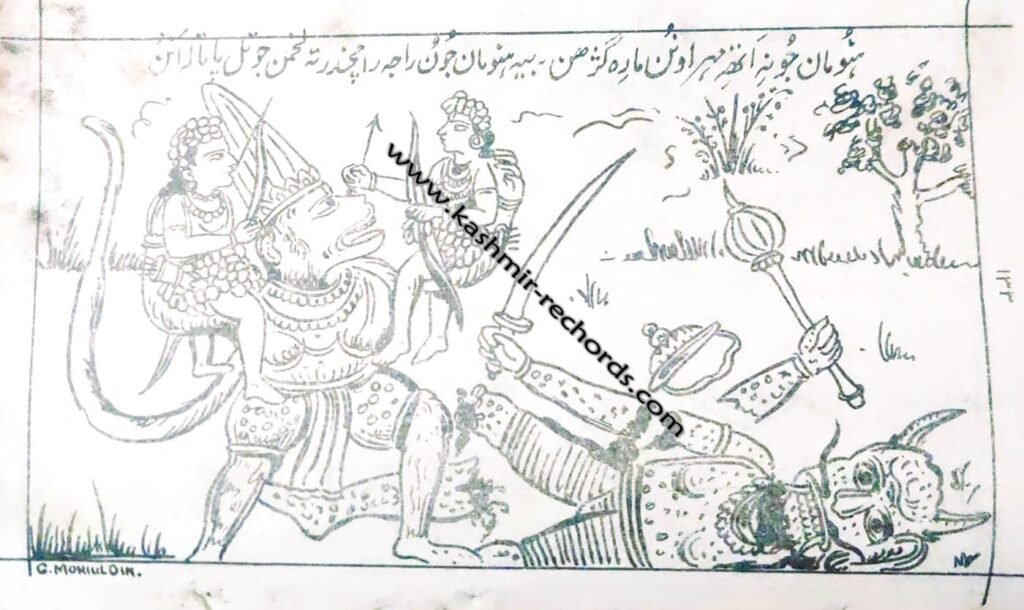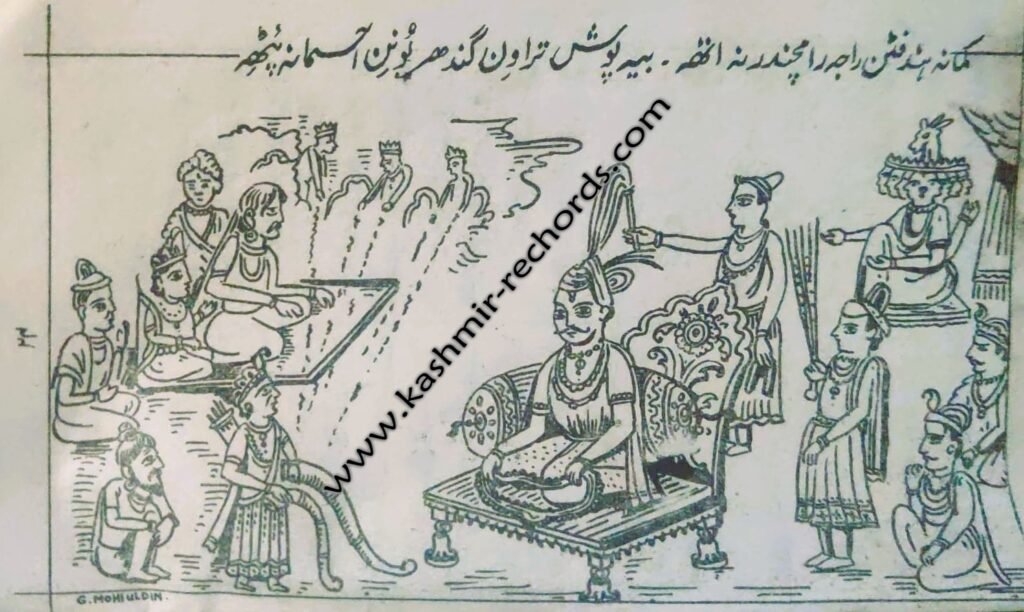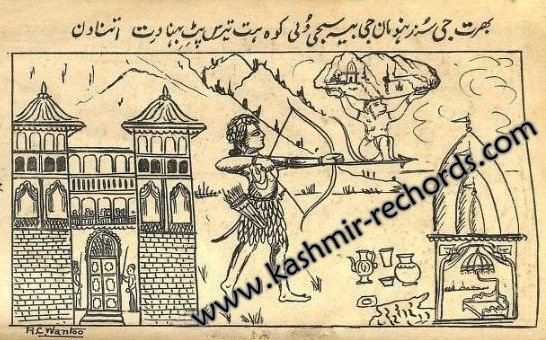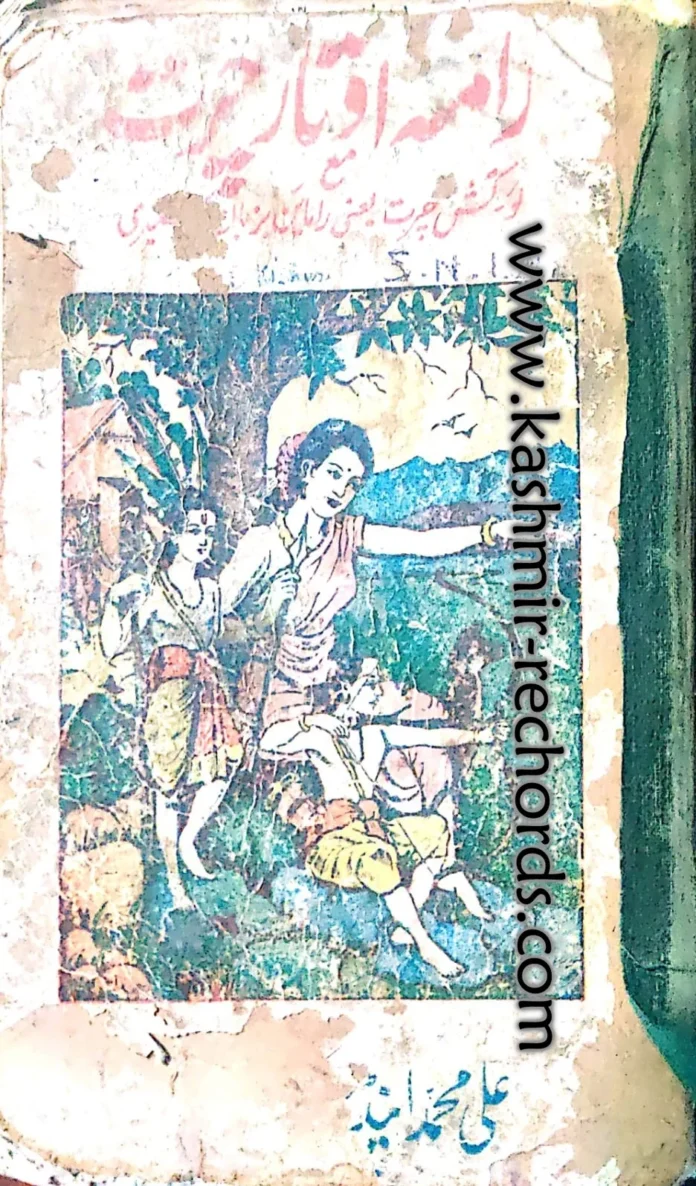(Kashmir Rechords Exclusive)
In the heart of Kashmir, a unique version of the Ramayana stands as a testament to the region’s rich cultural tapestry. This iconic Kashmiri Ramayana, penned by Pandit Devkar Prakash Bhat and published multiple times between 1910 and 1940 by Ali Mohammad Tajar Kutab (later known as Ali Mohd and Sons) of Habba Kadal, Srinagar, is adorned with exquisite handmade sketches. These sketches, brimming with dedication and devotion, were crafted by two almost forgotten Kashmiri artists: R.C. Wantoo and G. Mohi ul Din.

The Silent Artists Behind the Masterpiece
Much has been written about the Kashmiri Ramayanas, but little is known about R.C. Wantoo, a Kashmiri Pandit and G. Mohi ul Din. Their artistry brought to life the verses of Pandit Devkar Prakash Bhat, portraying the epic tales of Lord Rama with unmatched skill and passion. Their sketches provided visual narratives that complemented the poetic verses, making the stories more vivid and accessible to readers.


Preserving Their Legacy
Kashmir Rechords, is in possession of two editions of this Ramayana, published by Ali Mohd and Sons. These editions feature the names of R.C. Wantoo and G. Mohi ul Din, etched beside their beautiful sketches. In an effort to ensure these artists are not forgotten, Kashmir Rechords is bringing their work to the public domain, hoping that those with knowledge of these artists can provide further insights.


The Kashmiri Ramayana: A Cultural Treasure
The book, titled “Rama Avtar Charit—Luv Kush Charit” and “Ramayan Bazaban Kashmiri” by Pandit Devkar Prakash Saheb Bhat, holds a significant place in Kashmiri literature. Even Sir George Grierson, who edited the summary page of Ramayana into English, did not include the sketches by Wantoo and Mohi ul Din. Over the years, this Ramayana has been reprinted in various languages and scripts, including Kashmiri (Nastalique and Nagri), English, and Hindi. However, the unique handmade sketches by Wantoo and Mohi ul Din have often been missing in these versions.
A Call for Recognition
The history of the Kashmiri Ramayanas is vast. The first known Kashmiri Ramayana, “Shankara Ramayana,” was transcribed from Sharada into Devanagari by Shankar Kanth during the reign of Maharaja Ranbir Singh. This was followed by several other versions, each contributing to the literary heritage of Kashmir. Among these, the “Rama Avtar Charit” by Divakar Prakash Bhat, used by George A. Grierson for his summary page translation work, stands out for its inclusion of Wantoo and Mohi ul Din’s sketches. It is in this book that the famous Kashmiri lines are found:

“Koushaliya Hindeh Gobroo,
Karyo Goore Goore,
Paryo Ram Ramie,
Karyo Goore Goore”
Seeking Contributions
Kashmir Rechords aims to publish a detailed account of the Kashmiri Ramayanas and their various editions in future write-ups. In the meantime, we are seeking information about R.C. Wantoo and G. Mohi ul Din. Those who know about these artists are encouraged to provide genuine inputs to support@kashmir-rechords.com or kashmirrechords@gmail.com. Full credit will be given to contributors, ensuring that the legacy of these remarkable artists is preserved and celebrated.
